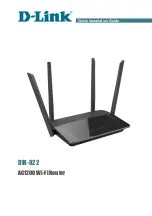
225
Host mode : Single VLAN
Offline detection : Enabled
Max online users : 4294967295
Authentication attempts : successful 1, failed 0
Current online users : 1
MAC address Auth state
00e0-fc12-3456 Authenticated
The output shows that Host A has passed MAC authentication and has come online. Host B failed
MAC authentication and its MAC address is marked as a silent MAC address.
Example: Configuring RADIUS-based MAC authentication
Network configuration
As shown in
, the device uses RADIUS servers to perform authentication, authorization,
and accounting for users.
To control user access to the Internet by MAC authentication, perform the following tasks:
•
Enable MAC authentication globally and on GigabitEthernet 1/0/1.
•
Configure the device to detect whether a user has gone offline every 180 seconds.
•
Configure the device to deny a user for 180 seconds if the user fails MAC authentication.
•
Configure all users to belong to ISP domain
bbb
.
•
Use a shared user account for all users, with username
aaa
and password
123456
.
Figure 70 Network diagram
Procedure
1.
Make sure the RADIUS server and the access device can reach each other. (Details not
shown.)
2.
Configure the RADIUS servers:
# Create a shared account for MAC authentication users. (Details not shown.)
# Set username
aaa
and password
123456
for the account. (Details not shown.)
3.
Configure RADIUS-based MAC authentication on the device:
# Configure a RADIUS scheme.
<Device> system-view
[Device] radius scheme 2000
[Device-radius-2000] primary authentication 10.1.1.1 1812
[Device-radius-2000] primary accounting 10.1.1.2 1813
[Device-radius-2000] key authentication simple abc
















































